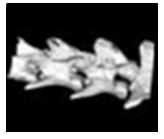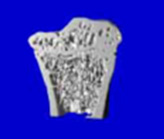


Bone provides protection to visceral organs, storage of minerals, locomotive movement and are the locations of hematopoiesis. Structural integrity of bone can be affected by factors of aging, dietary imbalance, disuse, environmental contamination, infections, medicine, metabolic disorders, physical loading, radiation, smoking and trauma. Efficacy and safety data of the developing therapeutics to bone in animal models are required to predict the effects in human for excluding the toxicity of it.
Bone fragility increases with age in both genders, and most notably after menopause in female. Anti-resorptive agents are well established, such as bisphosphonates, SERMs and likely anti-RANKL antibodies. Anabolic agents are actively being developed. Besides PTH analogues and stem cells, molecules from BMP family and Wnt signal pathways, such as Smads, ERK, Dkk-1, Runx2, and beta-catenin are targets for therapeutics. Safety and efficacy data of bone in animal models (rodents and non-human primates) are required to predict the therapeutic effects in human.
At PharmaLegacy, our scientists have cumulated more than two centuries of experiences in bone physiopathology, especially in bone safety, metabolic bone diseases, osteoarthritis and osteoporosis. Our familiarity with IND/NDA and SOP driven GLP quality assurance operations can aid your regulatory submission.
• Antigen, chemical and collagen induced arthritis for systemic and local modalities.
• Calvaria periosteal injection for assessing bone formation or resorption capability.
• Dietary alterations for body composition.
• Estrogen-deficient bone loss for screening anti-resorption or anabolic agents.
• Steroid-induced bone loss for seeking agents of osteopenia antagonist.

• Bone safety for evaluating therapeutic effects on skeletal integrity, short or long term.
• Disuse bone loss for examining anti-resorptive and anabolic agents.
• Dietary alterations for body composition.
• Estrogen deficient bone loss for screening anti-resorptive and anabolic agents.
• Renal osteodystrophy for seeking bone quality and quantity improvement agents.
• Steroid-induced bone loss for identifying agents of osteopenia antagonist.
• Testosterone deficient bone loss for screening anti-resorptive and anabolic agents.

• Pharmacokinetic evaluation of dose range and short-term effects on biomarkers of bone.
• Estrogen deficient bone loss for screening therapeutic effects on biomarkers of bone.
• Bone safety for evaluating therapeutic effects on skeletal integrity, long term with biopsies.
• Biomechanics of bone properties.
• Serum and urine biomarkers of bone remodeling.
• Densitometry of pDEXA, micro-CT and pQCT on bone mineral.
• Static and dynamic histomorphometry of bone cells and tissue, and quality of bone matrix..